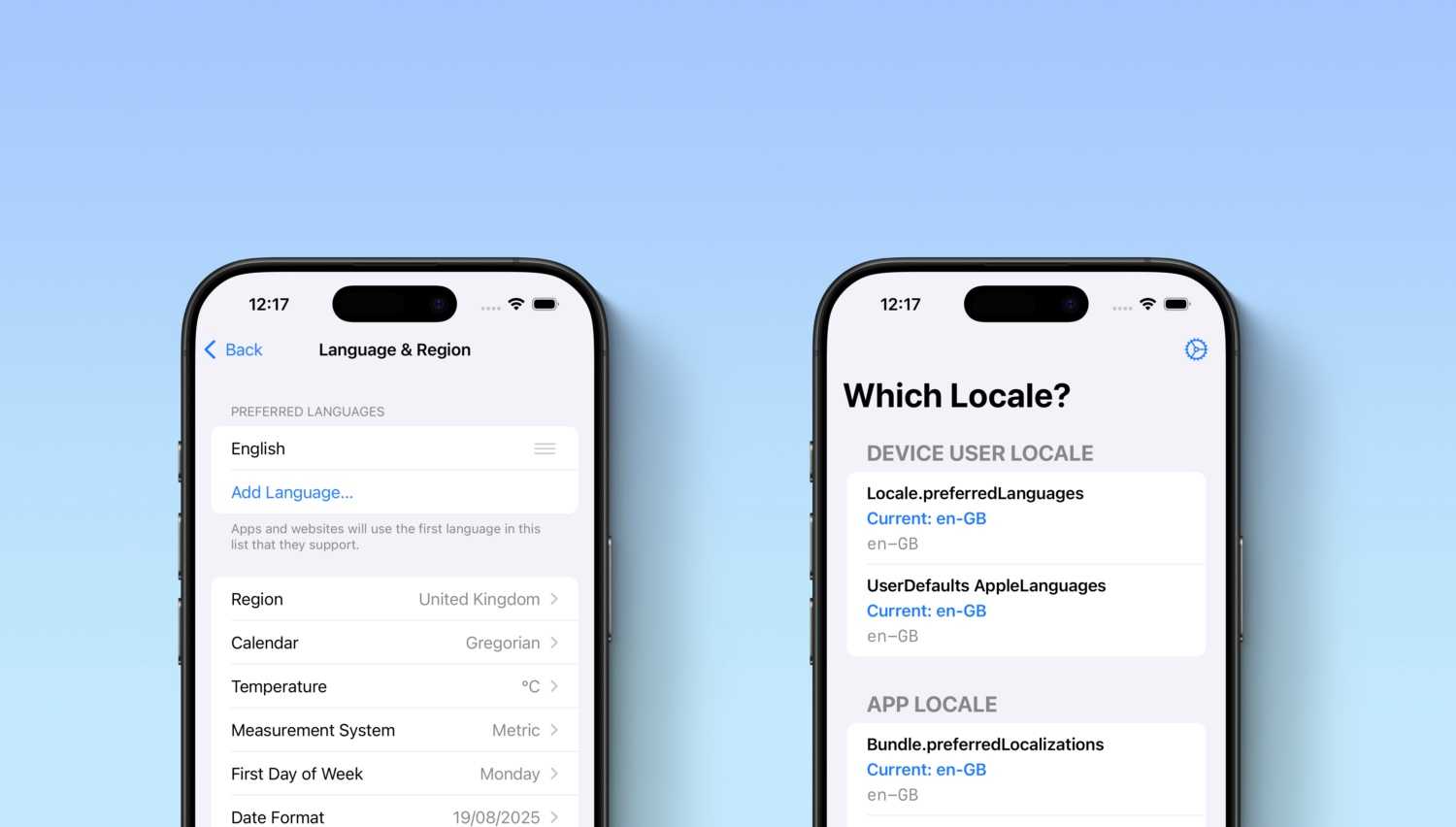As you may already know from my previous post, in the last weeks I started to work in a new team on a new project at lastminute.com group. The goals we have is to renew the foundations of the company software overall architecture by introducing in the development workflow new technologies. While on the backend we defined a clear path to reach our goal from the beginning (DDD + Axon), on the frontend we still had some doubt. In fact the application we are developing, a new booking cancellation flow, will be integrated in our myarea, an app where the user that manage his/her bookings. We decided to develop this new app with React + Styled Components + Our internal design system, that in lastminute.com group is the standard frontend stack (and is in some way already “enough” modern). But there was one problem: coupling between apps.
The myarea app at the moment already loads some widgets (usually associated to specific features) as npm packages. This packages are developed by different teams/external companies. This basically means:
- that if a team want to deploy a new version of their widget, they have to update the package json of the myarea app, tag and release it.
- there is a coupling between the dependencies of the widgets and of the myarea. This means that you have to keep in sync every dependency version (eg. do massive React upgrade in every app/widget).
This was unacceptable. We wanted to be independent with our new “cancellation widget”, in terms of deployment and dependencies. This why we started to investigate how we can implement a microfrontend architecture for our myarea. What is the microfrontend architecture pattern? Let’s see what micro-frontends.org tells us:
The term Micro Frontends first came up in ThoughtWorks Technology Radar at the end of 2016. It extends the concepts of micro services to the frontend world. … The idea behind Micro Frontends is to think about a website or web app as a composition of features which are owned by independent teams. Each team has a distinct area of business or mission it cares about and specialises in. A team is cross functional and develops its features end-to-end, from database to user interface.
The definition is telling us what we already know from the microservice world in the backend: we want to create a frontend application where each team can independently develop and deploy their feature-specific frontend widget/app. Independetly means:
- the apps can have different technology stacks (eg. one app can use React and another one can use Vue as UI framework)
- the apps run in “isolations”, they don’t need to/they don’t have to force the teams to share dependecies between apps
- the apps can be deployed as standalone: so no need to have one app that declare for example the other one as npm dependecy.
There are various way to achive the microfrontend architecture, that usually require a lot of custom work/development and/or the usage of specific frameworks (eg. single-spa etc.). With the release of Webpack 5 there is a new game-changer player in the microfrontend world: Module Federation. What is Module Federation? It is a JavaScript architecture invented by Zack Jackson and Marais Rossouw that is now integrated into Webpack 5 core APIs. Let’s read the explanation from Zack about Module Federation:
A scalable solution to sharing code between independent applications has never been convenient, and near impossible at scale. The closest we had was externals or DLLPlugin, forcing centralized dependency on a external file. It was a hassle to share code, the separate applications were not truly standalone and usually, a limited number of dependencies are shared. Moreover, sharing actual feature code or components between separately bundled applications is unfeasible, unproductive, and unprofitable. … Module federation allows a JavaScript application to dynamically load code from another application — in the process, sharing dependencies, if an application consuming a federated module does not have a dependency needed by the federated code — Webpack will download the missing dependency from that federated build origin. Code is shared if it can be, but fallbacks exist in each case. Federated code can always load its dependencies but will attempt to use the consumers’ dependencies before downloading more payload. Less code duplication, dependency sharing just like a monolithic Webpack build.
So module federation is a way to let an application dynamically load external parts/widgtes/components without relying on the classical npm dependecies management. It lets you build microfrontend application, but without sacrifice performances with the shared libraries mechanim. This seems very cool .
In the next section I will show you how me and my colleague Alex Stabile create a new cancellation widget that is integrated in the my area app (the app that lets our users see his/her bookings). Let’s start!!
One note: the application described above is a simplification of the real stack we have in our codebase. We created this easier example in order to let you focus on the topic of the post.
Implementation
As we said before the applications we are going to work with are 2:
- the first one called
cancel-order, that is basically a widget that displays a flow where the user can cancel an order - another one, called
my-area, that is an app where the user can manage his/her orders
The final result we want to achive is integrate the cancel-order widget so that when the user click on the cancel button of an order card, the cancellation flow will start. In the video below you can see the final result of the implementation described below.
Let’s first see how the two app are composed. Both of them use:
- React
- css in js framework emotion
- Material UI as components library
The container app, my-area, uses React Router to manage the navigation in the app. Obviously given that we are going to use module federation, both apps are bundled using Webpack.
The cancel-order app exposes one widget called CancelOrderWidget, that is in charge of displaying and controlling the cancellation flow. Below you can find its (very simple) implementation.
import { ChangeEvent, FC, useState } from "react";
import {
Button,
Container,
FormControl,
FormControlLabel,
FormLabel,
Radio,
RadioGroup,
Typography,
} from "@mui/material";
interface Props {
orderId: string;
}
const CancelOrderWidget: FC<Props> = ({ orderId }) => {
const [disable, setDisable] = useState<boolean>(true);
const handleChange = (event: ChangeEvent<HTMLInputElement>) => {
setDisable(event.target.value === "no");
};
return (
<Container sx={{ my: 3 }}>
<Typography variant="h3" color="text.primary">
{`Do you really want to cancel order ${orderId}?`}
</Typography>
<FormControl sx={{ my: 3 }}>
<RadioGroup defaultValue={"no"} onChange={handleChange}>
<FormControlLabel value="yes" control={<Radio />} label="Yes" />
<FormControlLabel value="no" control={<Radio />} label="No" />
</RadioGroup>
<Button
sx={{ my: 2 }}
disabled={disable}
size="small"
variant={"contained"}
onClick={() => alert("Order cancelled")}
color={"error"}
>
Proceed
</Button>
</FormControl>
</Container>
);
};
export default CancelOrderWidget;The my-area app has a main component called App where we have all the routes defined. One of these routes contain the OrdersPage that displays a list of OrderCards. Each one of them has a button that let the user navigate to the cancel order route where we display the CancelOrderPage, that will contain our CancelOrderWidget loaded with module federation. Below you can find the code for this components.
// ...App.tsx
const App: FC = () => (
<>
<GlobalStyles styles={{ body: { margin: 0, padding: 0 } }} />
<Header />
<Container sx={{ my: 3 }}>
<BrowserRouter>
<Routes>
<Route
path="/"
element={
<OrdersPage orderRepository={new InMemoryOrderRepository()} />
}
/>
<Route path={"/:orderId/cancel"} element={<CancelOrderPage />} />
</Routes>
</BrowserRouter>
</Container>
</>
);
// ...OrdersPage.tsx
interface Props {
orderRepository: OrderRepository;
}
export const OrdersPage: FC<Props> = ({ orderRepository }) => (
<>
{orderRepository.get().map((order) => (
<OrderCard order={order} key={order.id} />
))}
</>
);
// ...OrderCard.tsx
interface Props {
order: Order;
}
export const OrderCard: FC<Props> = ({ order }) => (
<Card sx={{ my: 2 }}>
<CardMedia
component="img"
height="300"
image="https://picsum.photos/1200/300"
alt="green iguana"
/>
<CardContent>
<Typography variant="h5" color="text.primary">
{order.departure} to {order.destination} - {order.date}
</Typography>
</CardContent>
<CardActions>
<Button
component={Link}
to={`/${order.id}/cancel`}
size="small"
variant={"contained"}
color={"error"}
>
Cancel
</Button>
</CardActions>
</Card>
);So how do we intergate the two widgets with Module Federation? Let’s find out!! We can start from the cancel-order Webpack configuration. The first thing we need to do is import the ModuleFederationPlugin. Than we can instantiate it with the correct configuration. In this case we will configurate it with the following parameters:
cancelOrderWidgetasnameof remote module federated. We need to be sure that every federated module has a unique name with respect to the other.remoteEntry.jsasfilename. This option is used to give a name to the remote entry file. In thi file you will find the mapping between between the components exposed and their chunk url.exposesparameter will contain a list of all the widgets exposed by this federated module. In our case we are exposing a single componentCancelOrderWidget, specifing as value the path to it (in our project) and./CancelOrderWidgetas key.- a list of dependecies in the
sharedparameter. This one is used to specify a list of all the libraries that this application will share with other applications in support of files listed in the exposes section. In our case we are telling to the module federation plugin to shared all the dependecies (notice the...deps). Forreactandreact-domwe are sharing the dependecies with a specific override: we are basically telling to the module federation plugin it should not load more than one copy of them. This is a consequence of the fact that these libraries have internal state and multiple instances/versions cannot live in the browser at the same time. We are also specifing which version should be used or try to use a fallback with therequiredVersion. Module federation has an internal fallback strategy where it will decide which version of the library should be used bases on it module federate configuration (this is probably a topic for an entire new post).
Below you can find the complete configuration of the cancel-order widget.
const HtmlWebPackPlugin = require("html-webpack-plugin");
const ModuleFederationPlugin = require("webpack/lib/container/ModuleFederationPlugin");
const deps = require("./package.json").dependencies;
module.exports = {
output: {
publicPath: "http://localhost:3001/",
},
resolve: {
extensions: [".tsx", ".ts", ".jsx", ".js", ".json"],
},
devServer: {
port: 3001,
historyApiFallback: true,
},
module: {
rules: [
{
test: /\.m?js/,
type: "javascript/auto",
resolve: {
fullySpecified: false,
},
},
{
test: /\.(css|s[ac]ss)$/i,
use: ["style-loader", "css-loader", "postcss-loader"],
},
{
test: /\.(ts|tsx|js|jsx)$/,
exclude: /node_modules/,
use: {
loader: "babel-loader",
},
},
],
},
plugins: [
new ModuleFederationPlugin({
name: "cancelOrderWidget",
filename: "remoteEntry.js",
exposes: {
"./CancelOrderWidget": "./src/components/CancelOrderWidget",
},
shared: {
...deps,
react: {
singleton: true,
requiredVersion: deps.react,
},
"react-dom": {
singleton: true,
requiredVersion: deps["react-dom"],
},
},
}),
new HtmlWebPackPlugin({
template: "./src/index.html",
}),
],
};Let’s see the configuration for the my-area app. Also in this case we need to import the ModuleFederationPlugin and configure it in the proper way:
myareaasnameof the federeated moduleremotesparameter will contain the names of the other federated module applications that this application will consume code from. In our case we will define just one remote, with keycancelOrder. This key is the one we will use to reference in the code of themyareaapp the remote module. As value we will set the name of the remote federate module (the value of thenameparameter in theModuleFederationPluginconfiguration in thecancel-orderapp) followed by the url of the remote entry file of ourcancel-orderapp.- again, the
sharedparameter with the same approach we used to defined the shared dependecies for thecancel-orderapp.
Below you can find the entire Webpack configuration for the my-area app.
const HtmlWebPackPlugin = require("html-webpack-plugin");
const ModuleFederationPlugin = require("webpack/lib/container/ModuleFederationPlugin");
const ExternalTemplateRemotesPlugin = require("external-remotes-plugin");
const deps = require("./package.json").dependencies;
module.exports = {
output: {
publicPath: "http://localhost:3000/",
},
resolve: {
extensions: [".tsx", ".ts", ".jsx", ".js", ".json"],
},
devServer: {
port: 3000,
historyApiFallback: true,
},
module: {
rules: [
{
test: /\.m?js/,
type: "javascript/auto",
resolve: {
fullySpecified: false,
},
},
{
test: /\.(ts|tsx|js|jsx)$/,
exclude: /node_modules/,
use: {
loader: "babel-loader",
},
},
],
},
plugins: [
new ModuleFederationPlugin({
name: "myarea",
remotes: {
cancelOrder:
"cancelOrderWidget@[widgets.cancellationOrderWidgetUrl]/remoteEntry.js",
},
shared: {
...deps,
react: {
singleton: true,
requiredVersion: deps.react,
},
"react-dom": {
singleton: true,
requiredVersion: deps["react-dom"],
},
},
}),
new ExternalTemplateRemotesPlugin(),
new HtmlWebPackPlugin({
template: "./src/index.html",
}),
],
};Now, if you look closely to the configuration above you noticed something strange:
- the url of the remote entry file is defined as the code below, so webpack expects to find it in some way defined in the placeholder/variable contained in the squared brackets.
"cancelOrderWidget@[widgets.cancellationOrderWidgetUrl]/remoteEntry.js";- we are calling an additional plugin from the module federation world called
ExternalTemplateRemotesPlugin.
This combination in the configuration will let us define the url of the remote entry file dinamically at runtime when the application starts . This is a consequence of the fact that what we defined as
"[widgets.cancellationOrderWidgetUrl]/remoteEntry.js";will be replaced by the ExternalTemplateRemotesPlugin as widgets.cancellationOrderWidgetUrl + "/remoteEntry.js", so a concatenation of a variable, widgets.cancellationOrderWidgetUrl that as you can see is defined on the window object, plus the fixed part of the url "/remoteEntry.js" (here you can find the source code for the ExternalTemplateRemotesPlugin that contains the concatenation described here).
This is absolutely astonishing!! This basically means we can have multiple federated module remote entry file urls configurations based on different needs, for example different urls for enviroment (eg. local, qa, production). This also means that we can dinamically update these url and let the
my-area app configure itself at runtime with a list of urls that represents the latest versions of our federated remote modules .
How can we implement it? We can implement a configuration repository that loads a configuration with the list of urls for our federated module. This configuration will be downloaded from the GET api endpoint '/api/widgets'. In our case the response will contain just one url for our cancel-order federated module. This is the response we will get
{
"cancellationOrderWidgetUrl": "http://localhost:3001"
}If you remember the configuration for the module federation of the my-area app, cancellationOrderWidgetUrl corresponds to the last part of the variable widgets.cancellationOrderWidgetUrl. o we just need to take this objectstuff received from the configuration and add it to the window object.
After this, we can start our my-area app in the right way. Below you can find the implementation of the loadConfiguration configuration repository, and how we are using it in the index.ts, our app entry point, in order to load the configuration and start the app.
// ...Configuration.ts
export const loadConfiguration = async () => {
try {
const widgetsResponse = await fetch("/api/widgets");
window.widgets = await widgetsResponse.json();
} catch (e) {
console.error("Error retrieving modules configuration", e);
}
};
// ...index.ts
import { server } from "./server";
import { loadConfiguration } from "./logic/Configuration";
server();
loadConfiguration().then(() => {
import("./App");
});At this point we have everything we need in place in order to load our remote federated module. To do this we will load the CancelOrderWidget as a standard dynamic component using React.lazy and Suspense. The import path for the widget is cancelOrder/CancelOrderWidget, that correspond to the key defined in the remotes section of the my-area webpack configuration plus the name of the widget as defined in the exposes section fo the cancel-order webpack configuration. As a consequence of the fact that the widget is not available in our node_modules, neither its types, we must define them manually.
After the last bits of code below, we will finally able to start our, and we will have the same result show in the video at the beginning of this explanation.
// ...CancelOrderWidget.d.ts
declare module "cancelOrder/CancelOrderWidget" {
const CancelOrderWidget: React.FC<{ orderId: string }>;
export = CancelOrderWidget;
}
// ...CancelOrderPage.tsx
import React, { FC, Suspense } from "react";
import { useParams } from "react-router-dom";
const CancelOrderWidget = React.lazy(
() => import("cancelOrder/CancelOrderWidget")
);
type UrlParams = {
orderId: string;
};
export const CancelOrderPage: FC = () => {
const { orderId } = useParams<UrlParams>();
return (
<Suspense fallback={<div />}>
<CancelOrderWidget orderId={orderId ?? ""} />
</Suspense>
);
};Conclusion
In this Github repository you can find the implementation fo the example described above. Module federation is relatively young feature of Webpack, but seems that can help a lot of developers to reach the goal of implementing a clean micro frontend architecture . What do you think? Let me know in the comment section
.






